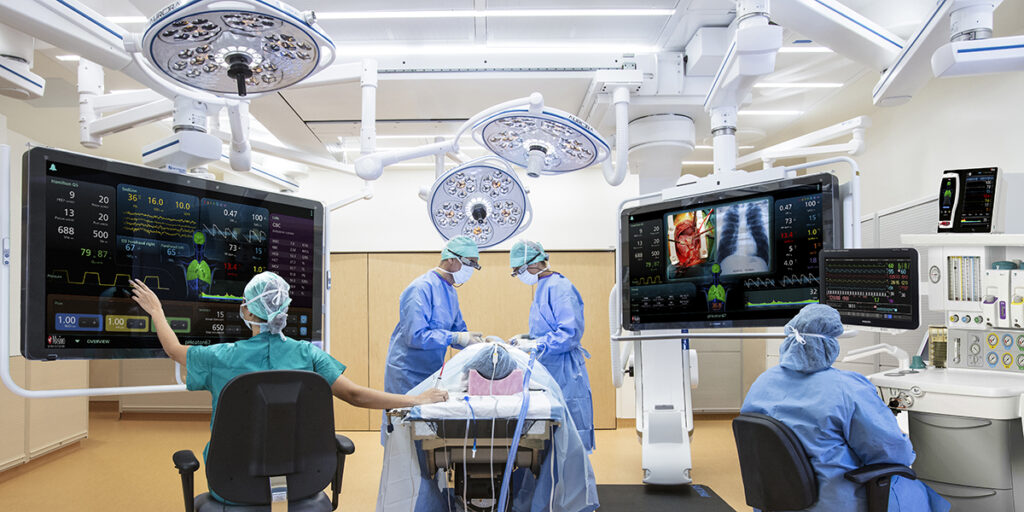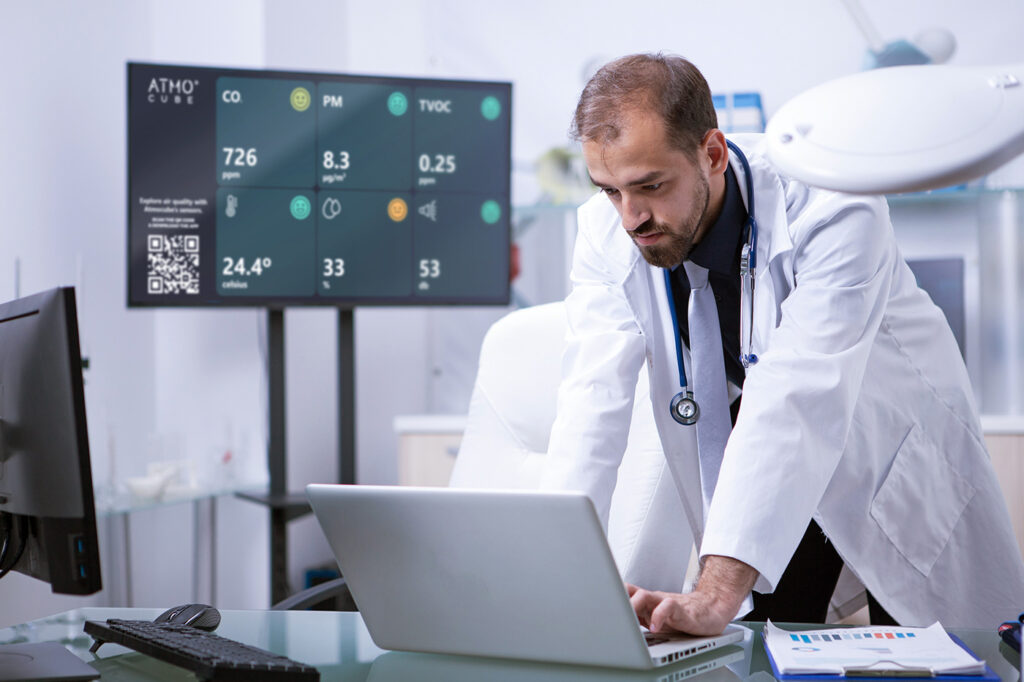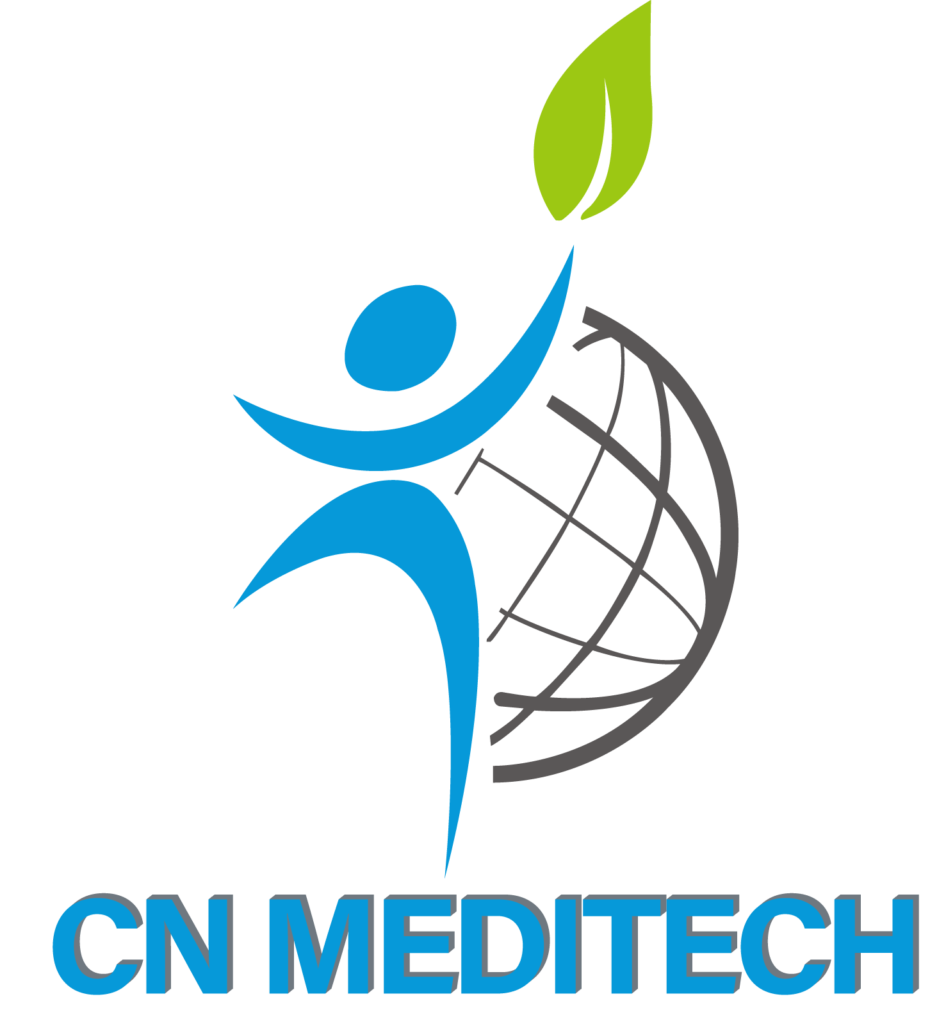Introduction
The building automation system is a comprehensive system that centrally manages and monitors various weak current equipment in the building, improving the overall management ability of the building. Reduce equipment failure rate, maintenance and operation costs. Hospital buildings generally have more space layouts, use more electromechanical equipment, and have a much greater energy consumption load than general buildings. The building automation system has become an indispensable part of the construction of smart hospitals.
The monitoring equipment of the hospital building automation system includes cold and heat sources, air conditioning, fresh air, fan disk, air supply and ventilation, water supply and drainage, power supply and lighting, etc., to achieve management and control of temperature and humidity, energy consumption, safety, etc., and improve hospital management efficiency and safety.
What equipment does the building automation system monitor in hospital buildings?
Hospital buildings are different from general large buildings. There are not only high-frequency lighting, air conditioning, elevators, water supply and drainage equipment, but also various medical devices with different functions. The building automation system can set control parameters that meet the needs of different buildings according to the management needs of the building, realize decentralized control and centralized monitoring, ensure reliable operation of equipment, and save energy and reduce consumption. The following are several aspects of hospitals that require building automation system monitoring and control:
Cold and heat source system monitoring: monitor the inlet and outlet temperatures of key equipment in the cold and heat source system (such as boilers, refrigeration units, cooling towers, etc.). And the temperature changes of various parts of the system. This helps to detect whether the equipment is working properly and whether the system is in an ideal state.
Air conditioning/fresh air system monitoring: monitor refrigeration units, fresh air units, variable air volume units, fan disks and other facilities to achieve temperature and humidity adjustment, scheduled schedules and automatic start and stop control; the fresh air fan adopts a regular air supply method and a combination of end fan disks to complete the air conditioning control of the building.
Fan disk monitoring: automatically control the operation of air conditioning equipment through indoor thermostats, and control the start and stop of cold water or hot water electric valves by measuring room temperature to change room temperature. The system platform can query, control and lock the panels of each area at any time, which can effectively prevent the waste of air conditioning.
Air supply and ventilation system monitoring: unified management of the air supply and ventilation system in the building, to achieve fan start and stop control, operation status monitoring, fault alarm, fire protection system linkage and other functions.
Water supply and drainage system monitoring: real-time monitoring of various water levels, pump operation status and pipe network pressure in the system, control of pump operation mode, quantity and operation of corresponding valves, balance of demand and water supply, timely discharge of sewage, optimal control of high efficiency and low consumption, and economic operation.
Power supply system monitoring: real-time monitoring of power supply transformers, high-voltage side power supply parameters, low-voltage side power supply parameters (or only one item) in the building.
Intelligent lighting system monitoring: monitoring of lighting is mainly to better save resources, and automatic control of lighting is performed using a pre-arranged time program.
Monitoring content of medical equipment and special areas in hospital buildings:
Clean air conditioning monitoring: an independent system should be used for purification of operating rooms.
Medical gas monitoring and measurement: oxygen, N2, monitoring and measurement of compressed gas and vacuum attraction.
Wastewater monitoring: monitoring various indicators of sewage treatment, control and management of its process flow.
Air quality monitoring: monitoring and negative pressure control of exhaust systems in areas with air pollution sources.
Pneumatic transmission monitoring: management and monitoring of pneumatic tube logistics transmission systems.

Intelligent hospitals must apply hospital building automation system (BA) solutions
Hospital building automation system (BA) has very high requirements for the comfort of the medical environment in the treatment and rehabilitation of patients, as well as the health of medical staff. At the same time, high-quality air is also an important technical support for treating diseases, preventing infections, and reducing mortality. Therefore, we should pay full attention to the special requirements of the medical environment.
1. Excellent air purification performance
The life of patients is closely related to the cleanliness of the air in places such as medical operating rooms. In addition, medical places are places where patients gather and air pollution is serious. Constant temperature and relatively closed environment increase the possibility of infection. Therefore, medical air conditioners must have efficient and long-lasting air purification functions to eliminate microbial and chemical gas pollution in the air.
2. The equipment itself has a very high cleanliness
In order to ensure the cleanliness of the air, the interior of medical air conditioning equipment and ventilation ducts must be kept clean, otherwise it will cause bacteria to grow in large numbers, causing “secondary pollution” of indoor air. In order to solve this problem, open air conditioning equipment must be selected to facilitate maintenance personnel to regularly clean the interior of air conditioning equipment and ventilation ducts.
3. Sufficient fresh air flow
Patients are highly dependent on the freshness of the air, especially in the ward. Usually there are multiple accompanying staff in the ward. If the fresh air volume is insufficient, it is easy to aggravate the condition or cause other diseases, which is caused by lack of oxygen. In order to ensure sufficient fresh air volume, the hospital building automation system (BA) needs to have special instruments to detect the quality of the air in real time in addition to installing appropriate equipment.
4. Organized air flow
The air flow pattern will directly affect the spread of bacteria and harmful substances, and even lead to cross-infection and the spread of chemical and radioactive substances. Fresh air should flow into the room from the bottom to form a “fresh air lake”.
5. Appropriate temperature and humidity
Temperature is a way to treat diseases. Different types of patients have different temperature requirements. Patients with weak constitutions are extremely sensitive to temperature, and even slight temperature changes may aggravate the disease. Many medical devices also have special requirements for temperature. Humidity is closely related to pathogens. The higher the humidity, the longer the bacteria survive. Some special patients, such as those with respiratory diseases, need to strictly control humidity. Precision medical equipment can only operate normally at a specific humidity. The medical air conditioner of the hospital building automation system (BA) should be able to independently adjust the temperature and humidity of each area.
6. A quiet and silent medical environment
Noise not only makes it difficult for patients to rest, but also affects their recovery. It also adds pressure to medical staff and weakens their attention and thinking ability. The hospital’s air conditioning system is the main source of noise and must be taken seriously.
7. Very reliable performance
As a public service institution, the hospital building automation system (BA) cannot stop running, which means that the hospital air conditioning system must be 100% reliable and absolutely no problems can occur. Especially in some key departments such as operating rooms, delivery rooms, intensive care units, premature baby rooms, etc., if the air conditioning system suddenly stops and fails, it will pose a serious threat to the patient’s life. Therefore, the reliability requirements of the hospital air conditioning system exceed any other place.
8. Regular maintenance and upkeep are required
Dust and bacteria will accumulate inside the air conditioning system, and the temperature and humidity are suitable for bacterial growth, so the air conditioning system will become a breeding ground for bacteria, causing serious pollution to the indoor air. Therefore, the terminal of the air conditioner, the air purification device and the air duct must be designed to be easy to disassemble and clean to facilitate regular maintenance and upkeep.
9. Regular testing is required
In order to ensure the normal operation of the hospital central air conditioning system and maintain the quality of indoor air, a strict monitoring system must be established to monitor the air quality regularly. In particular, key indicators such as air dust concentration, bacteria content and oxygen content must be tested regularly.
In order to meet the special needs of the medical environment, the equipment in the building must be monitored. Therefore, the solution of the hospital building automation system (BA) is crucial to improving the operating efficiency of the equipment in the hospital and ensuring the comfort of the medical environment, especially in creating an intelligent hospital.

Design principles of hospital building automation system (BA)
1. Safety principle: Ensuring the safety of the hospital building automation system (BA) is the primary consideration in the design. The system should have reliable fire prevention, explosion prevention and electrical safety measures to ensure the safety of patients and medical staff.
2. Principle of practicality: The design of hospital building automation system (BA) should focus on practicality, meet the needs of different departments of the hospital, and adapt to the changes in scientific and technological development. The system should be easy to use, simple to operate, and fully functional to improve work efficiency.
3. Principle of energy saving: The design of hospital building automation system (BA) should take into account the requirements of energy conservation and emission reduction. Through reasonable energy management and monitoring means, energy consumption can be minimized and the impact on the environment can be reduced.
4. Principle of scalability: With the development of hospital business, hospital building automation system (BA) needs to have a certain degree of scalability. The design should fully consider future needs to ensure that the system can be flexibly upgraded and expanded.
5. Principle of reliability: The design of hospital building automation system (BA) should have a high degree of reliability, and can automatically alarm and take emergency measures when a fault occurs. The setting of backup equipment should be considered during the design to ensure the continuous operation and reliability of the system.
6. Principle of normativeness: The design of hospital building automation system (BA) should comply with relevant national and industry standards to ensure the legality and compliance of the system and avoid safety hazards and legal disputes.

Function
1. Improve the quality of the internal environment of the hospital
The building automatic control system provides a comfortable and healthy environment for patients and medical staff by real-time monitoring and adjusting the temperature, humidity, air quality and other environmental parameters in the hospital. In special areas such as clean operating rooms, the system uses independent air conditioning system detection to ensure that the cleanliness and humidity of the air meet medical requirements. At the same time, the system can also monitor the sewage in the hospital to ensure that its various indicators meet environmental protection standards and ensure the hygiene and safety of the hospital environment.
2. Ensure the normal operation of medical equipment
Medical equipment in the hospital is the key to medical services, and its normal operation is crucial to the treatment of patients. The building automatic control system monitors the operating status of medical equipment in real time, detects equipment failures in time and issues early warnings, and reduces medical accidents caused by equipment failures. In addition, the system can also monitor and analyze the energy consumption of medical equipment, provide energy-saving suggestions for hospitals, and reduce operating costs.
3. Realize intelligent management
The building automatic control system can realize intelligent management of various activities within the hospital. For example, the intelligent lighting control system can automatically adjust the light brightness according to the ambient light and time, which not only ensures the lighting effect but also reduces energy consumption. At the same time, the system can also monitor the power supply and distribution, elevators and other equipment of the hospital in real time to ensure the normal operation of the equipment and improve the service quality and safety of the hospital.
4. Improve patient satisfaction and medical effects
Through the building automation system, the hospital can realize the intelligent management of different areas such as wards, operating rooms, and laboratories. The system can adjust environmental factors such as temperature, humidity, and air quality according to the needs of different areas to provide patients with a more comfortable and healthy medical environment. This environment has a positive effect on the patient’s rehabilitation and can improve patient satisfaction and medical effects.
5. Promote the construction of hospital informatization
The building automation system can be connected with the hospital’s informatization system to realize information sharing and data interaction. This enables the hospital to obtain and manage various data more conveniently, providing more support and help for the hospital’s decision-making and management. At the same time, the system can also provide data analysis services for the hospital to help the hospital understand its own operating conditions and market trends, and provide guidance for future development.
6. Reduce operating costs and energy consumption
The building automation system achieves comprehensive energy saving in the hospital by optimizing the operation strategy and energy consumption of the equipment. For example, the system can automatically adjust the operating status of the air conditioning system according to the temperature difference between indoor and outdoor, reducing unnecessary energy consumption. At the same time, the system can also monitor and statistically analyze the energy usage of the hospital in real time, helping the hospital understand and manage energy consumption and reduce operating costs.
7. Improve the safety and reliability of the hospital
The building automation system improves the safety and reliability of the hospital by realizing the linkage of security monitoring, alarm system and other functions. The system can monitor the safety status in the hospital in real time, detect safety hazards and abnormal situations in time, and take corresponding measures to deal with them. This capability is of great significance to ensure the safety and stability of the hospital.

Why Choose Us?

CNMEDITECH is dedicated to the long-term research of the medical consumables market. Our mission is “People oriented and win-win strategy,Matching the real needs of the region with a focus on human health,To be the world’s first-class medical field solution expert”. We have been manufacturing high-quality medical device products for more than ten years.
We have built our reputation on delivering quality healthcare solutions on time and on budget. All our products comply with international health and safety regulations and all products come with a warranty.
Are you still worrying about your customer’s product needs? Are you still angry that the product is expensive?Our medical consumables support personalized product customization.
Our company has many styles to choose from. In addition, we have high-quality pre-sales consulting guidance and professional after-sales service, all to meet your needs.
Whether it is a cost-effective or high-end product, there will always be something suitable for you. If you have any needs for products, you can ask us, our factory will meet your needs as soon as possible, and we will make every effort to provide you with solutions.Feel free to send us your inquiries.








